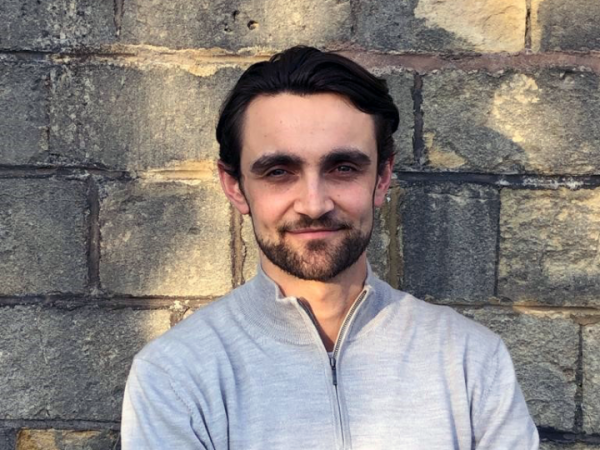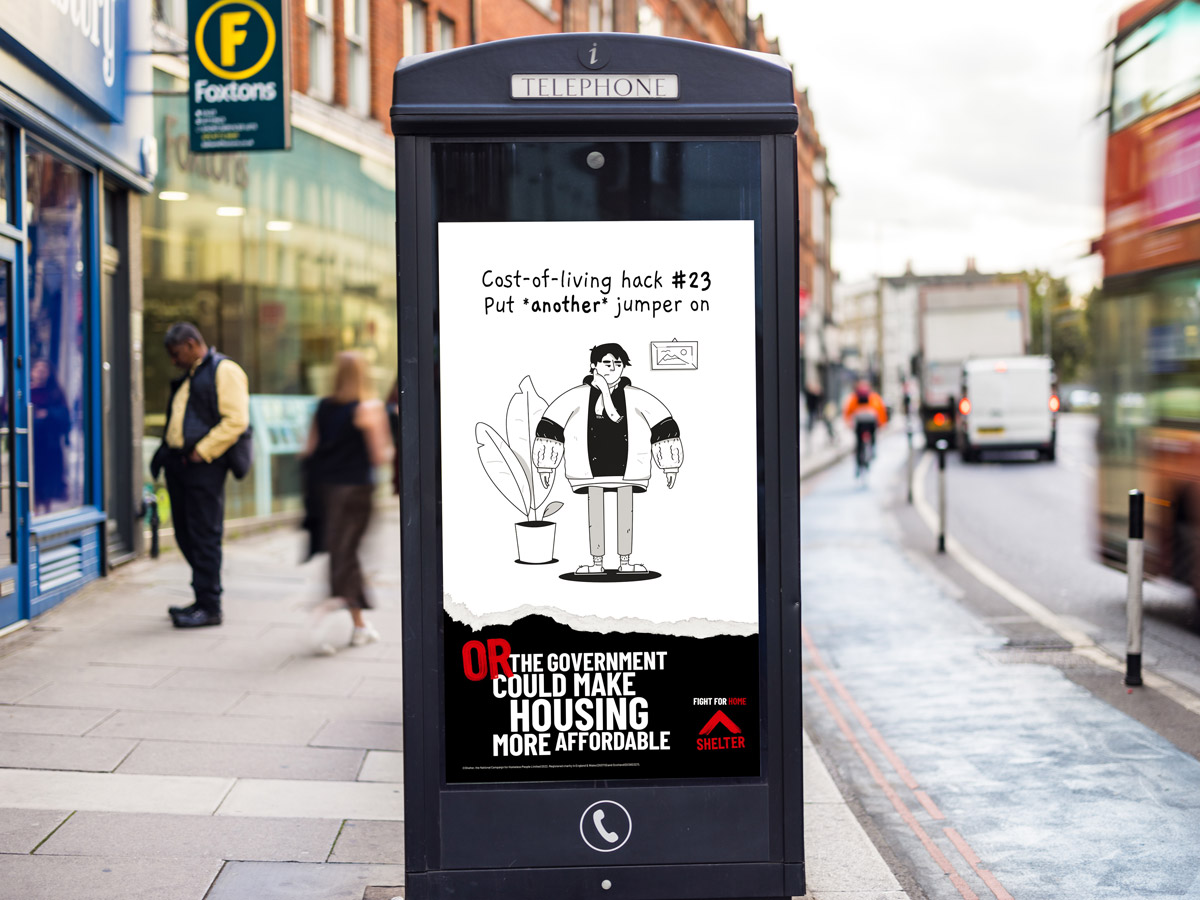In this interview MediaCat Magazine spoke to Shelter’s Head of Marketing, Helen Saul, and Strategist at Yonder Media, Jamie Kenyon, about Shelter’s new cost-of-living ‘hacks’ campaign, how it came to be, its goals and challenges, and the issues that many in the UK face right now.
Can you talk a little bit about your recent cost-of-living hacks campaign?

Shelter’s cost-of-living hacks campaign shines a light on the UK’s housing emergency by calling out the endless cost-of-living tips we’ve all seen and read over the past months, depressingly, some actually from government ministers. Using tongue-in-cheek illustrations, hacks like ‘Just work more hours! ‘or ‘Cancel your Netflix account’ are contrasted with the only genuine solution: that the government could make housing more affordable.
But the issue is no laughing matter; in total, 17.5m people are impacted by the housing emergency – living in overcrowded, dangerous, unstable or unaffordable housing. Though it feels like the cost of everything has rocketed all at once, the cost of housing has in fact been rising more than it should have for decades, and successive governments have failed to address it — which means we’re now dealing with a housing emergency and a cost of living crisis at the same time. This crisis is having an increasingly devastating effect on millions of people’s living conditions.
What is your goal with this campaign?
Our vision of success is a mobilised pool of supporters, alerted to the scale of the housing emergency, ready to champion Shelter’s mission. They will provide the bedrock for future communications as part of Shelter’s long-term strategy to make vital systemic change to end the housing emergency.

The challenge for comms was how to make people care — at a time when rampant inflation, escalating war in Europe and government disarray is occupying the nation’s psyche; getting any cut-through in this context demands hard-hitting, timely and pertinent communication where media and messaging work hand-in-hand.
This is so relevant for so many, but we had to find the audience that we could create the greatest impact on right now. The focus we’ve applied is to an urban audience, who adopt social and political causes as part of their identity and galvanise others around them. They may still be renters, or were until very recently, and these topics will be resonating hard for them. They are energetic and idealistic, want to see a just world for everyone, and importantly, they’re up for doing something about it.
Our aim is to harness this energy for Shelter, and to make every media pound go as far as possible by stimulating word of mouth and advocacy, so this group are our natural base for this important campaign. Over time, our ambition is to broaden our audience focus and build national consensus for Shelter’s mission.
How did the campaign come to life?
We mined audience data for insights for this group — the places they live and work, the contexts and content that shape their world view and the ideas and stories that stimulate their conversations; both on and offline. We worked hand-in-hand with Shelter’s in-house creative team to bring to life the media that feed our audience’s news diet, could command their attention, and would encourage participation but making complex information shareable and memorable; to help us both stimulate and fuel their conversations.
Outdoor was planned as our lead medium. It has become a particularly important channel for Shelter, lending the charity a presence on the streets and neighbourhoods where the housing emergency manifests. We’re running a stand-out cherry-picked campaign, using street level sites in less affluent areas, fly-posting and hand-painted statement making murals that showcase Shelter’s brand identity, while planning our site-list to over-index in regions with a high proportion of renters.
We’ve distributed beer mats in 325 pubs in areas with the highest proportion of our audience to stimulate and inform debate for those ‘over a pint’ conversations with provocative messaging and key stats. For the conversation online, we used Reddit, Twitter and YouTube, as well as targeted the digital news; going for those left-leaning news brands, as well as a contextual overlays for the right content, with a particular emphasis on anymore “helpful” money saving ideas. We worked in partnership with Vice to create custom editorial content that will live across their owned channels and wider ecosystem, from Apple News to Instagram.
Featured image: Shelter




























